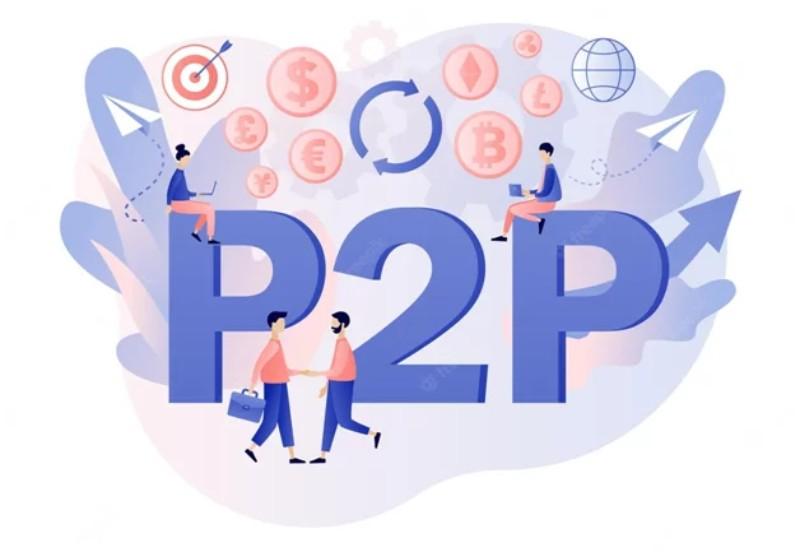The Peer-to-Peer (P2P) payment market has rapidly transformed how individuals exchange money—simplifying transactions, accelerating speed, and reducing reliance on traditional banking intermediaries. As digital payments surge across the globe, regulators are racing to keep up with this evolving landscape. While innovation drives growth, it also raises pressing concerns around security, money laundering, consumer protection, and data privacy.
This article explores the regulatory landscape of the P2P payment market, examines the compliance challenges facing industry players, and highlights the path forward toward a secure, fair, and transparent financial ecosystem.
The Rise of the P2P Payment Ecosystem
P2P payment platforms such as Venmo, PayPal, Google Pay, Zelle, Cash App, PhonePe, and WeChat Pay have seen massive adoption, especially among younger and mobile-first demographics. Global transaction values are expected to exceed $9 trillion by 2030, reflecting the demand for real-time, low-cost, and user-friendly payment solutions.
However, as the market grows, so does its complexity and risk exposure. Governments and regulatory bodies now face the challenge of enabling innovation while maintaining financial system integrity.
Global Regulatory Landscape
The regulatory framework for P2P payments varies widely by region and jurisdiction, with differing levels of enforcement, licensing requirements, and oversight.
1. United States
-
Regulators: The Consumer Financial Protection Bureau (CFPB), Financial Crimes Enforcement Network (FinCEN), and state-level financial authorities.
-
Key laws: Bank Secrecy Act (BSA), USA PATRIOT Act, and Electronic Fund Transfer Act (EFTA).
-
Focus areas: Anti-money laundering (AML), Know Your Customer (KYC) compliance, fraud prevention, and consumer data protection.
P2P platforms in the U.S. must register as Money Services Businesses (MSBs) with FinCEN and comply with AML programs.
2. European Union
-
Regulators: European Central Bank (ECB), European Banking Authority (EBA), and national regulators.
-
Key laws: Revised Payment Services Directive (PSD2), General Data Protection Regulation (GDPR).
-
Focus areas: Open banking APIs, strong customer authentication (SCA), data privacy, and transaction security.
PSD2 encourages competition and innovation, but imposes strict authentication and data-sharing standards on payment service providers.
3. Asia-Pacific
-
Countries like India and China have embraced digital payments, but each has unique regulations:
-
India: Overseen by the Reserve Bank of India (RBI), platforms must adhere to the Payment and Settlement Systems Act, KYC rules, and data localization requirements.
-
China: Platforms like Alipay and WeChat Pay are subject to People’s Bank of China (PBOC) regulations, which include transaction limits and anti-fraud systems.
-
Many APAC nations are also advancing frameworks around digital IDs and centralized data infrastructure.
4. Africa and Latin America
-
Regulation is evolving, with a focus on financial inclusion and mobile money frameworks.
-
Examples include M-Pesa in Kenya and Pix in Brazil, both operating under government oversight to ensure security and affordability.
Compliance Challenges Facing P2P Platforms
As the market becomes more regulated, P2P platforms face growing compliance burdens:
1. KYC and AML Obligations
P2P platforms must verify user identities and monitor transactions for suspicious activity. This requires robust customer onboarding, real-time monitoring, and reporting of suspicious transactions, which can be resource-intensive—especially for startups.
2. Fraud Prevention and Consumer Protection
The borderless and instant nature of P2P payments creates opportunities for fraud. Regulators are demanding more accountability from platforms, particularly in cases involving unauthorized transfers, phishing scams, and account takeovers.
3. Data Privacy and Localization
Regulations such as GDPR in Europe and India's data localization mandate require platforms to store and manage user data in specific ways. Balancing compliance with privacy laws while providing seamless global service is a growing challenge.
4. Cross-Border Transactions
International P2P payments introduce complications due to currency exchange rules, differing KYC standards, and tax implications. Platforms offering cross-border services must navigate a web of global financial regulations and reporting requirements.
5. Adapting to Regulatory Changes
As governments issue new rules or amend existing ones, P2P providers must constantly update their systems, policies, and training. Failure to stay compliant can lead to heavy fines, loss of licenses, or reputational damage.
Technological Solutions for Regulatory Compliance
To address these challenges, P2P payment providers are increasingly turning to RegTech (Regulatory Technology) for support:
-
Automated KYC/AML: AI-driven identity verification and risk scoring systems help streamline onboarding and transaction monitoring.
-
Blockchain and audit trails: Immutable records can assist in maintaining transparent transaction histories for audits and investigations.
-
Data encryption and access controls: Enhance security and ensure compliance with privacy laws.
-
Geofencing and localization tools: Help platforms adhere to regional rules by adapting services based on user location.
Collaboration and the Way Forward
The future of P2P payments will depend on effective collaboration between stakeholders—regulators, fintech companies, banks, and consumers. To foster innovation while ensuring safety:
-
Regulators must provide clearer guidelines, encourage sandbox testing environments, and harmonize global standards.
-
Platforms should prioritize compliance as a strategic pillar, investing in legal expertise and transparent practices.
-
Consumers must be educated on safe payment practices and their rights in digital financial transactions.
Conclusion
The P2P payment market continues to revolutionize how people transfer money, but it also presents regulatory and compliance challenges that cannot be ignored. From fraud prevention to data protection and cross-border legality, ensuring a secure and compliant P2P environment is essential for long-term sustainability.







